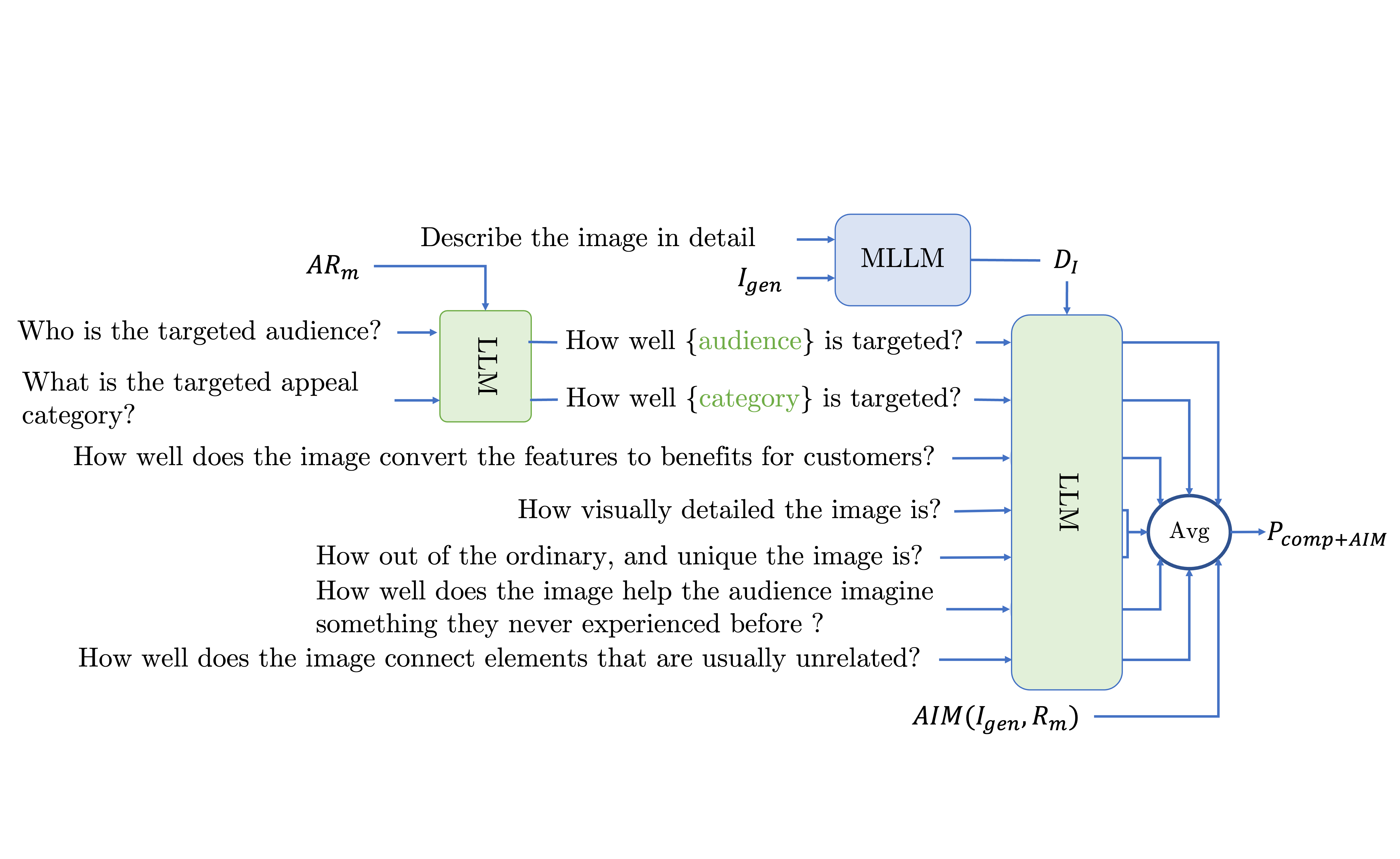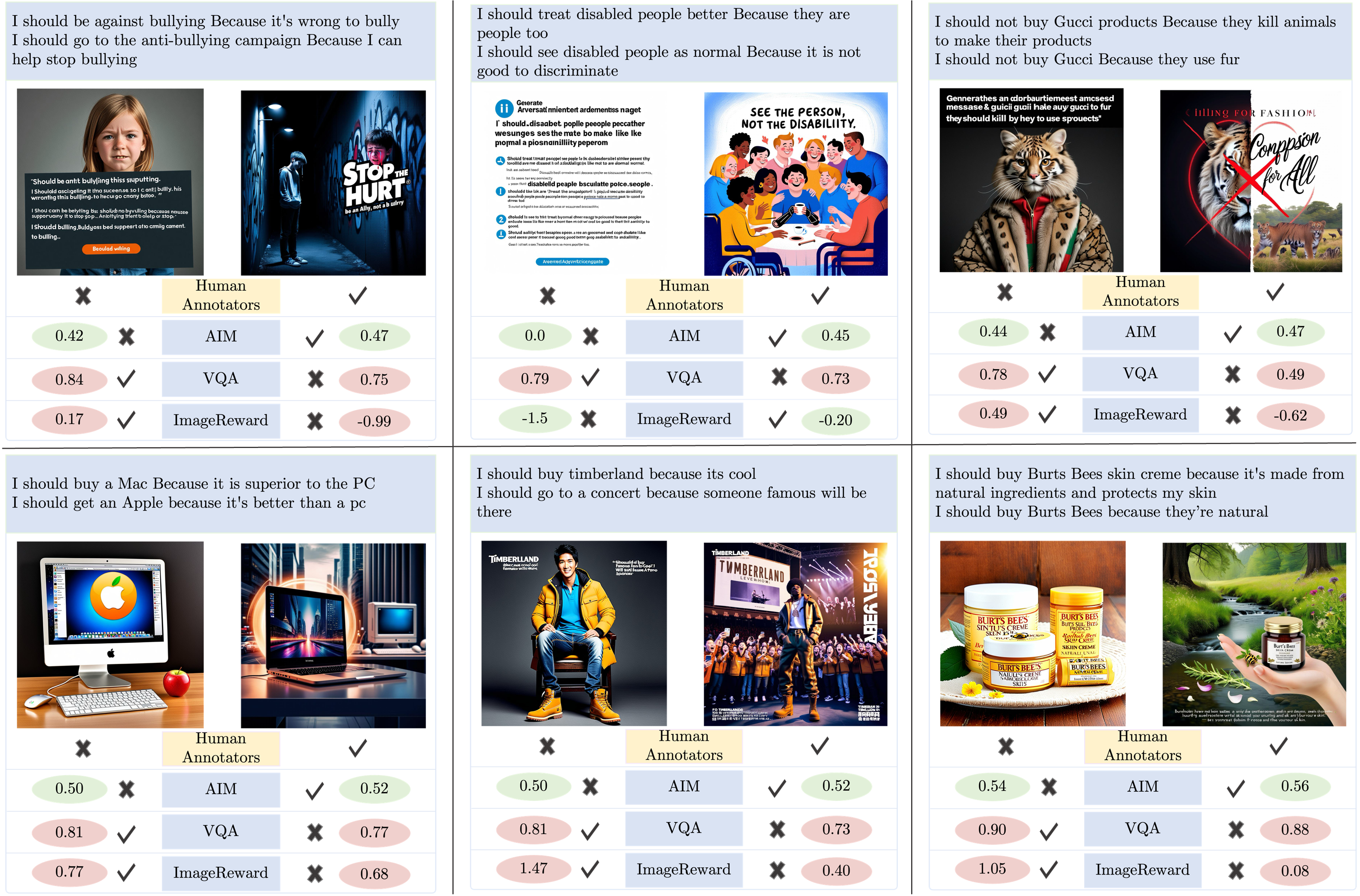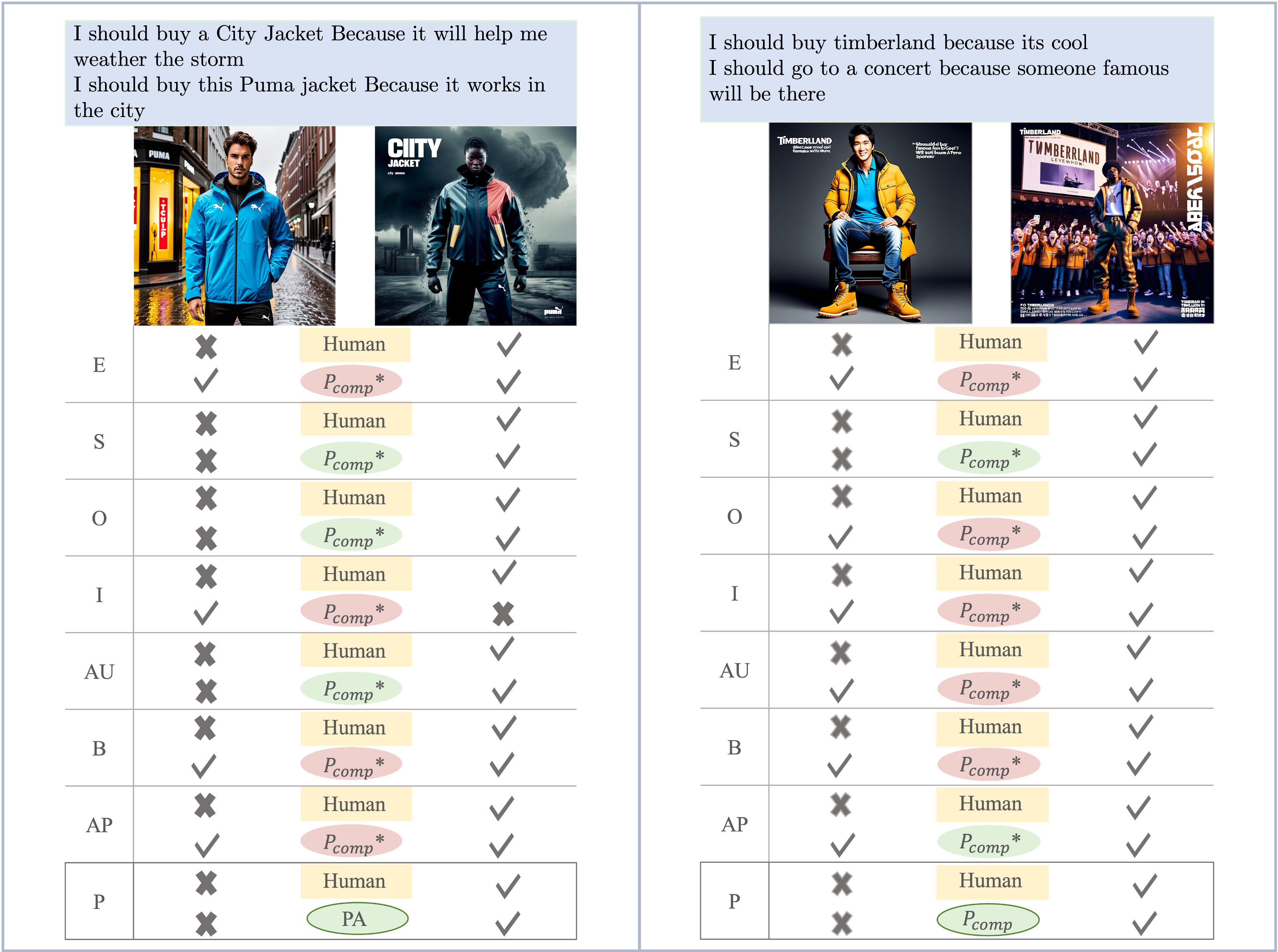Metrics (CAP)
To address the evaluation gap, the authors propose three novel metrics to assess generated images based on their Creativity, Alignment with the prompt, and Persuasiveness.
Creativity (Cobj)
Creativity is defined as the image's uniqueness while still effectively conveying the intended ad message. The metric is calculated as a ratio: the AIM score (for relevance) is divided by the average CLIP similarity between the generated image and the objects explicitly mentioned in the text (to measure uniqueness).
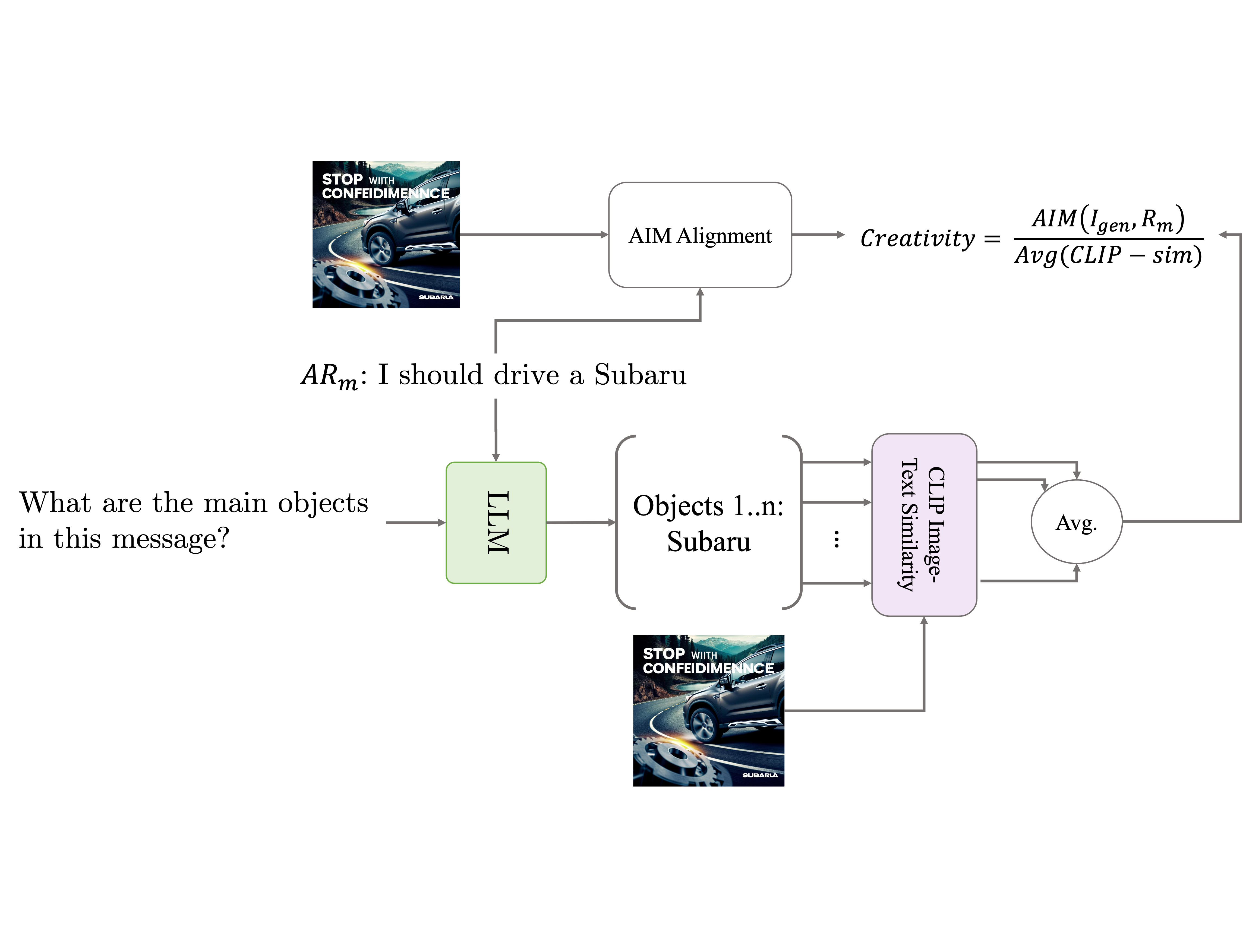
Process of computing Cobj
Alignment of Image and Message(AIM)
This metric is deisnged to evaluate the semantic and visual alignment between the message and the image, capturing both semantic and visual mismatch unlike other evaluation metrics focused on only visual mismtach.
The process involves two steps:
- A Multimodal Large Language Model (MLLM) generates a detailed description of the generated ad image.
- A fine-tuned Large Language Model (LLM) uses this description to generate a new action-reason statement (ARgen) that it interprets from the image.
The final AIM score is the semantic similarity between the original input message (ARm) and the newly generated statement (ARgen).
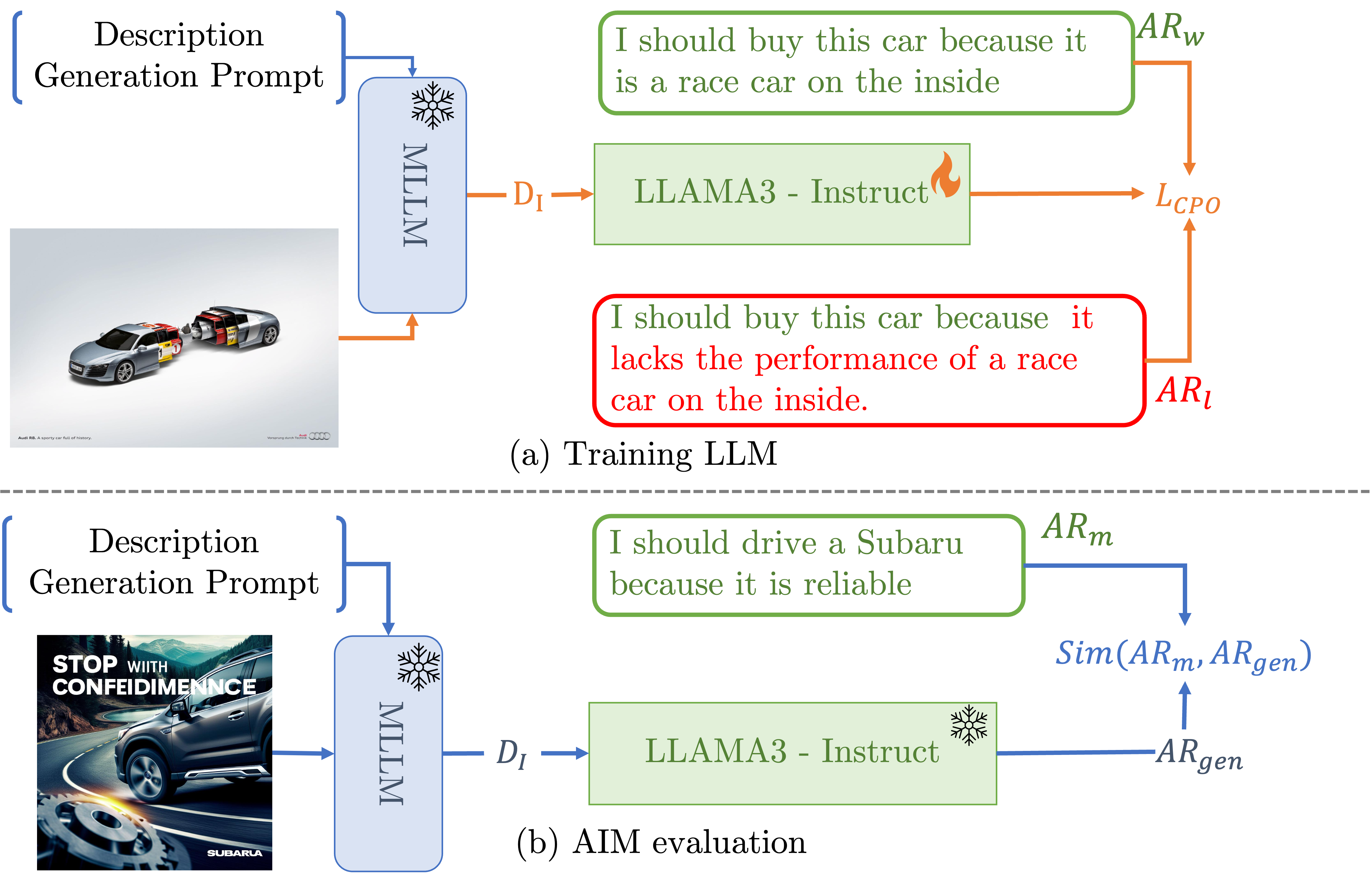
Overview of AIM. Orange denotes training, while blue is inference. ARw and ARl are used in training as the preferred and dis-preferred statements. ARm is the prompt for the T2I model.
Persuasiveness (Pcomp+AIM)
This metric evaluates an image's ability to be convincing to its intended audience. It combines scores from multiple components grounded in prior persuasion literature. An LLM is prompted with questions to score the image's ability to appeal to a specific audience, convert features to benefits, and use rhetorical appeals (Ethos, Pathos, Logos). It also scores visual qualities like elaboration, originality, imagination, and synthesis. The final persuasiveness score is a weighted average of these component scores and the AIM score.
